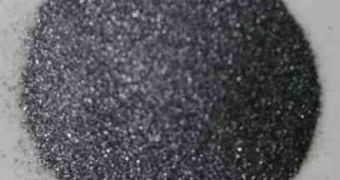Moore's Law has been the sacred rule of the computing hardware industry since its announcement in 1965. Basically, it states that the number of transistors in an average processor, for example, will increase exponentially, with the number doubling once every two years. However, it has been known that the pace of progress will eventually slow down, on account of problems that will occur in the miniaturization process. Experts at the Rice University (RU) and North Carolina State University may have found a way past that, when they created a new method of attaching molecules to the semiconducting silicon. The innovation could eventually result in smaller and more powerful processors.
The problem facing the industry today is, quite simply put, the tendency to make things smaller and more powerful. As the size of the transistors has decreased over the second half of the 20th century, their number of processors has constantly increased. But now, making them smaller is becoming problematic, mostly because of the fact that the process has reached the nanoscale. And the problem is not the size, of only a few billionths of a meter, but the internal structure of the silicon itself.
In normal computer “brains,” the silicon substrate is subjected to a process known as “doping,” in which trace amounts (one atom of boron, arsenic or phosphorus per 100 million of silicon) of chemicals are added, so as to make pure crystalline silicon a semiconductor. At the average scale, this is not a problem, but, at the micro- and nano-scales, doping starts becoming a real issue.
“When silicon gets really small, down to the nanoscale, you get structures that essentially have very little volume. You have to put dopant atoms in silicon for it to work as a semiconductor, but now, devices are so small you get inhomogeneities. You may have a few more dopant atoms in this device than in that one, so the irregularities between them become profound,” RU Chao Professor of Chemistry James Tour explains. He is also a professor of mechanical engineering, and materials and computer science at the university.
The newly devised theory proposes the use of a process called “monolayer molecular grafting,” instead of the usual doping. In this version, dopant molecules are not mixed into the silicon, but essentially added in an even layer on its surface. “We call it silicon with afterburners. We're putting an even layer of molecules on the surface. These are not doping in the same way traditional dopants do, but they're effectively doing the same thing,” Tour adds. The smallest state-of-the-art circuit is only 45 nanometers wide.
“This is a nice entry point for molecules into the silicon industry. We can go to a manufacturer and say, 'Let us make your fabrication line work for you longer. Let us complement what you have.' This gives the Intels and the Microns and the Samsungs of the world another tool to try, and I guarantee you they'll be trying this,” he concludes.

 14 DAY TRIAL //
14 DAY TRIAL // 
